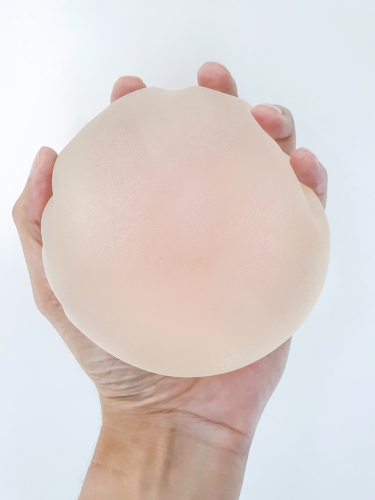The FDA has released an urgent warning about Allergan’s textured breast implants following research proving a link between the company’s textured implants and BIA-ALCL (breast implant-associated anaplastic large cell lymphoma). Allergan followed that warning by issuing a voluntary recall of their BIOCELL® textured breast implants and tissue expanders. These recalled models include textured Natrelle silicone-filled breast implants, textured Natrelle saline-filled breast implants, textured Natrelle Inspira silicone-filled breast implants, and textured Natrelle 410 anatomically shaped silicone-filled breast implants. A full list of recalled Allergan products can be found online.
The FDA advises that breast augmentation candidates avoid BIOCELL® textured implants, and urges patients experiencing unexplained complications to seek medical attention right away.

What Is the Danger?
Since receiving its first complaint in 2011, the FDA has been carefully monitoring the connection between textured implants and BIA-ALCL. It was not until now, however, that they had enough proof to take action. While the prevalence of BIA-ALCL is extremely low, the FDA wants to inform women with Allergan textured implants of the potential complications.
BIA-ALCL is a cancer (lymphoma) of the scar tissue that develops around the implant. Scar tissue will form around all foreign objects; however, many cases of BIA-ALCL are found in women with textured implants. Although BIA-ALCL develops due to the presence of textured breast implants, it should not be confused with breast cancer. BIA-ALCL is a cancer (lymphoma) of the immune system and needs to be treated promptly.
Signs of Breast Implant Problems
Breast implant-associated anaplastic large cell lymphoma is very rare and has been reported as early as one year after implantation and as late as 35 years after textured breast implant augmentation. Signs and symptoms include sudden breast enlargement, swelling, lumps in the breast or armpit, sharp pain, asymmetry, rashes on the breast, hardening of the breast, and excessive fluid buildup. Patients with textured implants who experience any of these symptoms should contact their physician immediately.
How Is Breast Implant-Associated Anaplastic Large Cell Lymphoma Diagnosed and Treated?
BIA-ALCL is diagnosed through an ultrasound or MRI (magnetic resonance imaging). These images will identify any fluid or lumps around the implant. If found, a biopsy of the fluid will be taken and tested for CD30IHC.
Women with BIA-ALCL will undergo surgery to remove the textured implant and the scar tissue; however, additional tests and treatment may be required if the lymphoma has spread beyond the tissue capsule.
Should You Remove Your Textured Implants?
As of now, the FDA is only recommending that patients remove their textured implants if they are experiencing symptoms of BIA-ALCL. Allergan, however, is working on a program offering patients with textured implants the chance to switch those for smooth implants even if they display no symptoms. More details about this offer are still to come.
What About Smooth Implants?
It is important to stress that this warning and recall deals specifically with textured implants from Allergan. This recommendation does not extend to Allergan’s smooth implants, MICROCELL® implants, or Mentor® and Sientra® textured implants.
Allergan BIOCELL® saline and silicone-filled textured implants and tissue expanders will no longer be distributed or sold in any market. Dr. Mabourakh has rarely used these textured implants but will no longer offer any Allergan textured BIOCELL® implants.
Over the years, Dr. Mabourakh has preferred to use smooth breast implants for all of his augmentation patients.
For more information about this warning, BIA-ALCL, or Allergan implants, contact Dr. Mabourakh by calling the Folsom office at (916) 984-8585, or the Stockton office at (209) 464-5656, or by filling out the online contact form.


